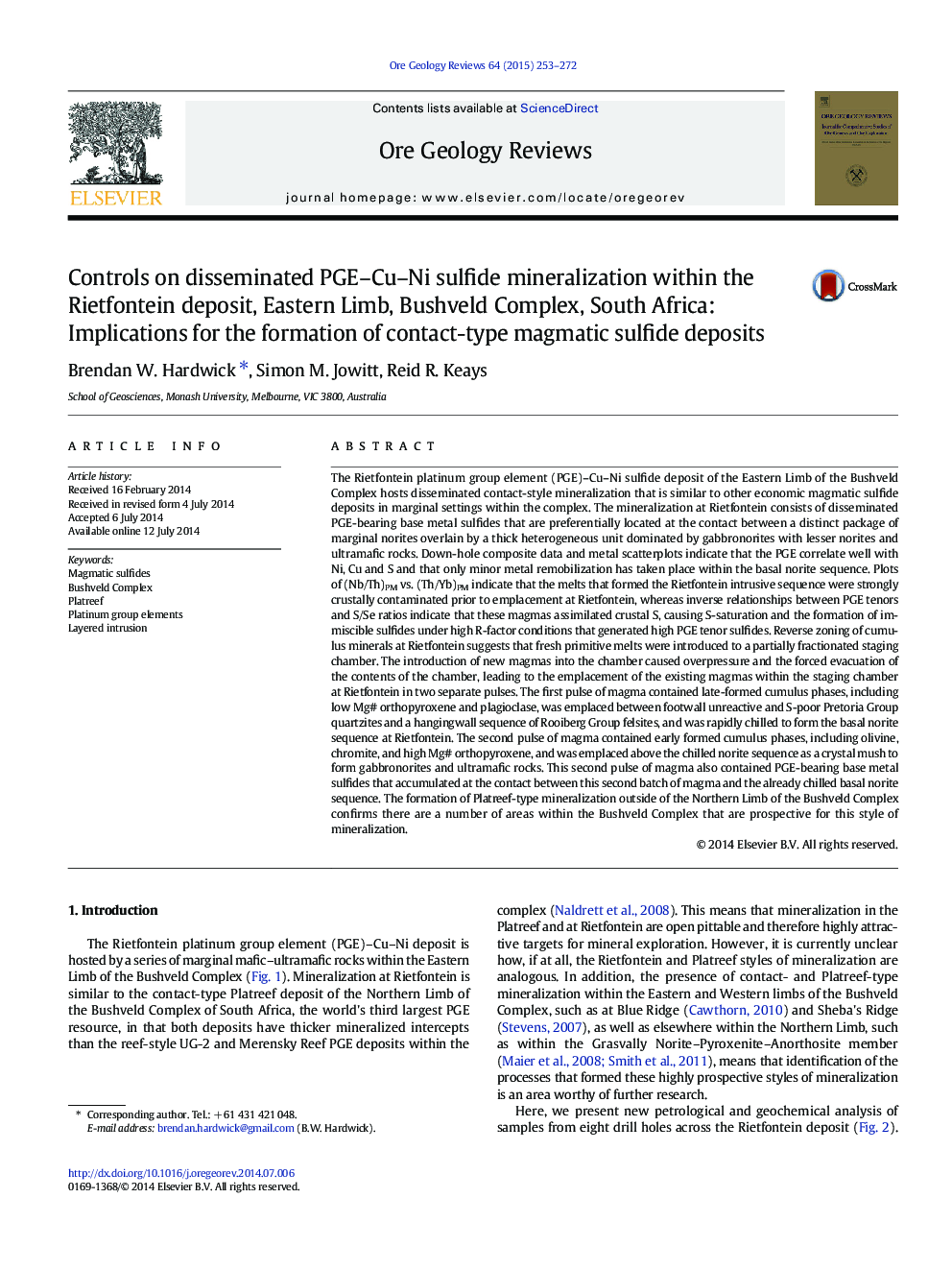| کد مقاله | کد نشریه | سال انتشار | مقاله انگلیسی | نسخه تمام متن |
|---|---|---|---|---|
| 4697106 | 1637239 | 2015 | 20 صفحه PDF | دانلود رایگان |

• PGE–Cu–Ni mineralization in Eastern Limb of Bushveld Complex, South Africa
• Mineralization preferentially located at the contact between mafic lithologies
• Intrusive sequence formed as two or more sills
• PGE bearing sulfides derived from a single magma staging chamber
• Sulfide saturation caused by assimilation of S-bearing crustal material
The Rietfontein platinum group element (PGE)–Cu–Ni sulfide deposit of the Eastern Limb of the Bushveld Complex hosts disseminated contact-style mineralization that is similar to other economic magmatic sulfide deposits in marginal settings within the complex. The mineralization at Rietfontein consists of disseminated PGE-bearing base metal sulfides that are preferentially located at the contact between a distinct package of marginal norites overlain by a thick heterogeneous unit dominated by gabbronorites with lesser norites and ultramafic rocks. Down-hole composite data and metal scatterplots indicate that the PGE correlate well with Ni, Cu and S and that only minor metal remobilization has taken place within the basal norite sequence. Plots of (Nb/Th)PM vs. (Th/Yb)PM indicate that the melts that formed the Rietfontein intrusive sequence were strongly crustally contaminated prior to emplacement at Rietfontein, whereas inverse relationships between PGE tenors and S/Se ratios indicate that these magmas assimilated crustal S, causing S-saturation and the formation of immiscible sulfides under high R-factor conditions that generated high PGE tenor sulfides. Reverse zoning of cumulus minerals at Rietfontein suggests that fresh primitive melts were introduced to a partially fractionated staging chamber. The introduction of new magmas into the chamber caused overpressure and the forced evacuation of the contents of the chamber, leading to the emplacement of the existing magmas within the staging chamber at Rietfontein in two separate pulses. The first pulse of magma contained late-formed cumulus phases, including low Mg# orthopyroxene and plagioclase, was emplaced between footwall unreactive and S-poor Pretoria Group quartzites and a hangingwall sequence of Rooiberg Group felsites, and was rapidly chilled to form the basal norite sequence at Rietfontein. The second pulse of magma contained early formed cumulus phases, including olivine, chromite, and high Mg# orthopyroxene, and was emplaced above the chilled norite sequence as a crystal mush to form gabbronorites and ultramafic rocks. This second pulse of magma also contained PGE-bearing base metal sulfides that accumulated at the contact between this second batch of magma and the already chilled basal norite sequence. The formation of Platreef-type mineralization outside of the Northern Limb of the Bushveld Complex confirms there are a number of areas within the Bushveld Complex that are prospective for this style of mineralization.
Journal: Ore Geology Reviews - Volume 64, January 2015, Pages 253–272